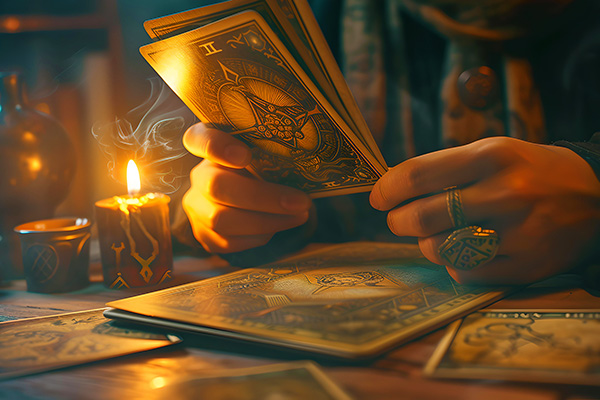My Path from Uncertainty to Faith: Contemplating My Initial Spiritual Encounter
 In the summer of 1987, just about a year after the loss of both my parents (only 23 days apart), I found myself attending a mediumship event at a Spiritualist church located in Toronto.
In the summer of 1987, just about a year after the loss of both my parents (only 23 days apart), I found myself attending a mediumship event at a Spiritualist church located in Toronto.
Reflecting on that moment, I can now appreciate how deeply synchronistic the event was. It was clearly orchestrated by spirit.
I had never set foot in a Spiritualist church prior to that day. Earlier that afternoon, I shared lunch with a friend who casually brought up the evening service. She was unable to go — she was leaving town — but something stirred within me. Even with my skepticism, I felt a strong urge to attend on my own.
The quaint church was situated on the second floor of a shopping plaza above a retail store. As I ascended the steep staircase, a blend of curiosity and unease washed over me.
By the time I arrived, the room was packed, so I picked a seat near the door, just in case anything strange or uncomfortable occurred. Having never experienced a mediumship session before, I was uncertain about what to expect. I wanted easy access to leave if things became too bizarre!
Once the guest mediums were introduced, the first one stepped forward and gestured toward a man seated at the back. “May I approach you?” she inquired gently. When he nodded, she stayed at the front and began channeling messages from the spirit realm for him.
If she had invited me to come forward, I might have panicked. I likely would have exclaimed, “No thank you, ma’am! You can stay where you are!” At that time, I didn’t know that “May I approach you?” is a standard phrase used by platform mediums to address audience members without moving closer.
Your deceased loved ones are not gone; they remain a part of your ongoing life. They accompany you every day, sharing in all that happens in your world ~ Rory Walkom
To my astonishment, she “came to me” next. Addressing me as the individual in the gold-colored jacket, she humorously noted that she had forgotten her glasses and couldn’t quite distinguish whether I was a man or woman! Instead of feeling offended, I found comfort in her uncertainty — it was validation that she had no previous knowledge of me, which heightened the genuineness of the messages that were about to ensue.
I was taken aback when she mentioned my parents were present. She didn’t specify their names but expressed apologies on their behalf for their abrupt departures just days apart. Then, she provided details that only my parents and I could know — small, intimate truths that confirmed her connection to the spirit world. At that very moment, I realized the messages genuinely came from my parents.
A particularly touching and amusing instance occurred when she remarked that my father was visibly frustrated. Apparently, he was annoyed that he couldn’t communicate with me directly and had to utilize a medium instead. The medium even chuckled and mentioned that my father would have doubted any of “this stuff” while alive. That was classic Dad, and it made me laugh despite my tears.
As the evening progressed, four out of the five mediums present delivered meaningful messages to me. Each brought forth insights and validations that resonated with my heart and soul. I left the church transformed. I entered as a skeptic, gripping the door handle for a potential exit, and emerged spiritually awakened and irrevocably altered.
Hearing from my parents was remarkable, but I never anticipated that one day I would also communicate with spirit as a psychic medium. That night, a seed was ignited within me — a seed that would eventually flourish into my journey as a spiritual seeker and mystic.
Everyone possesses psychic abilities to varying degrees, yet not everyone is a medium. A medium is a psychic who has refined their extrasensory perception and can engage with spirits in other dimensions ~ James Van Praagh
Guidelines For Consulting A Medium
If you’re contemplating reaching out to a psychic medium for the first time — or even if you’re a returning sitter — here are some guidelines to help ensure your experience is positive, respectful, and enriching.
Work with a medium, not just a psychic. Psychics tune into your individual energy, those around you, and your potential future. Mediums communicate messages from spirit. Psychic mediums do both. While all are equally valuable, understanding the distinction helps manage expectations and find the right person to work with.
Seek out the right medium. Conduct research or ask for recommendations. Look for a medium who resonates with you spiritually and adheres to ethical practices. Reviews and personal referrals can be very beneficial.
Establish clear intentions. Before your session, take a few quiet moments to contemplate your reasons for seeking a reading. Whether it’s for closure, guidance, or connection, setting an authentic intention invites spirit to work with clarity and intention.
Center yourself with inner stillness. The most receptive state for a meaningful session is one of inner calm, free from urgency or personal agenda. This openness encourages clarity and reduces interference from expectations or emotional intensity.
Be respectful and present. Treat the session as a sacred experience. Silence your phone, be punctual, and approach the encounter with humility and gratitude. The more you respect the process, the deeper the connection can become.
Avoid oversharing at the outset. Allow the medium to take the lead initially. Authentic messages should surface without your input. This ensures that the guidance you receive comes directly from Spirit and is not influenced by your disclosures.
Maintain an open mind, yet be discerning. Stay receptive to messages, even if they appear in unexpected forms. Simultaneously, trust your intuition to discern what resonates as true and what does not.
Respect the medium’s process, rights, and responsibilities. The sensitive mental state required for mediumship cannot be forced. Allow the process to unfold naturally without pressing for specific results. Ethical mediums resist the pressure to “perform” or to provide answers for every question. Honor their right to say “I don’t know” or to pause when spirit is not clearly present.
Focus on depth rather than specifics. While factual evidence like names or dates can be reassuring, the most profound validations often come through the essence of the loved one’s personality, memories, and emotional tone. Seek messages that resonate in your heart rather than solely in your mind.
Value spirit messages as profound opportunities. Communication from spirit often encompasses reflections, apologies, or insights that arise from a higher awareness. These are sacred chances for mutual healing, rather than mere curiosity or entertainment.
Take notes or record the session. Emotions may run high, and it’s easy to forget what was communicated. Having a recording or notes enables you to revisit the messages later and gain greater understanding over time.
Honor the sacred nature of grief. Mediumship should not be employed to bypass grief. A session is not a replacement for emotional healing; it serves as a supportive bridge. Avoid seeking constant contact out of dependency or an unwillingness to engage with the grieving process.
Be cautious against exploitation. Genuine spiritual service stems from integrity. Exercise caution if a practitioner insists on frequent expensive sessions or uses fear-based language to manipulate you for financial gain.
Avoid idolizing the medium. A medium is a channel, not a priest or guru. Healthy boundaries and clear roles promote clarity and prevent emotional entanglements that may obscure the message or cause confusion.
Integrate the messages gracefully. After the reading, take time to reflect. Journaling or meditating on the experience can help integrate the insights into your life meaningfully.
Don’t depend solely on readings. While messages from spirit can be comforting and enlightening, they should not replace personal decision-making or professional counsel. Use them for guidance, not as an absolute truth.
Collaborating with a reputable psychic medium can be an incredibly moving and empowering journey. When approached with openness, respect, and a grounded heart, the experience can provide healing, validation, and a revived sense of connection to the unseen threads linking our lives.
|
“What you focus on, you create; what you believe, you become.” This encapsulates Monica’s philosophy, shaped by her twenty-five years as a Clairvoyant, Light Worker, and Medium, residing in Ontario, Canada. Monica has been a guest speaker at various Spiritualist churches, offering Spirit greetings and messages from loved ones during Sunday services, All Mediums Nights, Healing Services, Meditation Services, and special fundraising events. She’s advised several international business leaders, connecting with her clients on a foundation of love, light, and empathy. She conveys messages that embody ideal outcomes and positive solutions utilizing the guidance of her spirits. If you’re interested in allowing Monica to assist in shaping your destiny, you can reach her at PsychicAccess.com. |
My Journey from Skepticism to Faith: Reflecting on My Initial Spiritual Experience
For many years, I labeled myself a skeptic regarding faith and spirituality. I was brought up in a household that prioritized science and rationality above all, and I was instilled with the idea of questioning everything and depending on evidence-based reasoning. Consequently, I struggled to believe in anything that lacked empirical proof.
Yet, everything shifted when I experienced my first spiritual encounter a few years ago. It was a moment that completely changed my view of the world and revealed the existence of something greater than myself.
I had been enduring a particularly hard time in my life, wrestling with feelings of loneliness and despair. I felt adrift and disconnected from my surroundings, desperately seeking some form of meaning or purpose to grasp.
One day, a friend suggested that I join her for a meditation retreat. I was initially reluctant, but something inside urged me to give it a chance. So, I packed my belongings and headed to the retreat center, unaware of what awaited me.
The retreat unfolded in a gorgeous, tranquil setting amid nature. As I sat meditating, a wave of peace and calm washed over me. For the first time in a long while, I felt truly centered in the moment, liberated from the burdens and anxieties that had encumbered me.
During one of the guided meditation sessions, I underwent a transformational spiritual experience that I can only describe as feeling unified with the universe. It was as if I had tapped into a higher power that linked me to everything and everyone around me. In that moment, I experienced a level of love and acceptance unlike anything I had felt before.
This experience marked a pivotal moment in my life. It helped me understand that there was more to existence than what could be explicated by science and reason alone. It opened my eyes to the possibility of a spiritual dimension beyond the physical realm.
Since that day, I have continued to delve into my spirituality and strengthen my bond with the divine. I have found comfort and direction in practices like meditation, prayer, and mindfulness. I have also sought the wisdom of spiritual teachers and mentors who have guided me on my journey of self-exploration.
Reflecting on my initial spiritual encounter, I am thankful for the skepticism I once embraced. It was through inquiry and the quest for answers that I was able to welcome new possibilities and beliefs into my life. My journey from skepticism to faith has been transformative, and I am eager to see what lies ahead. Continue reading


















